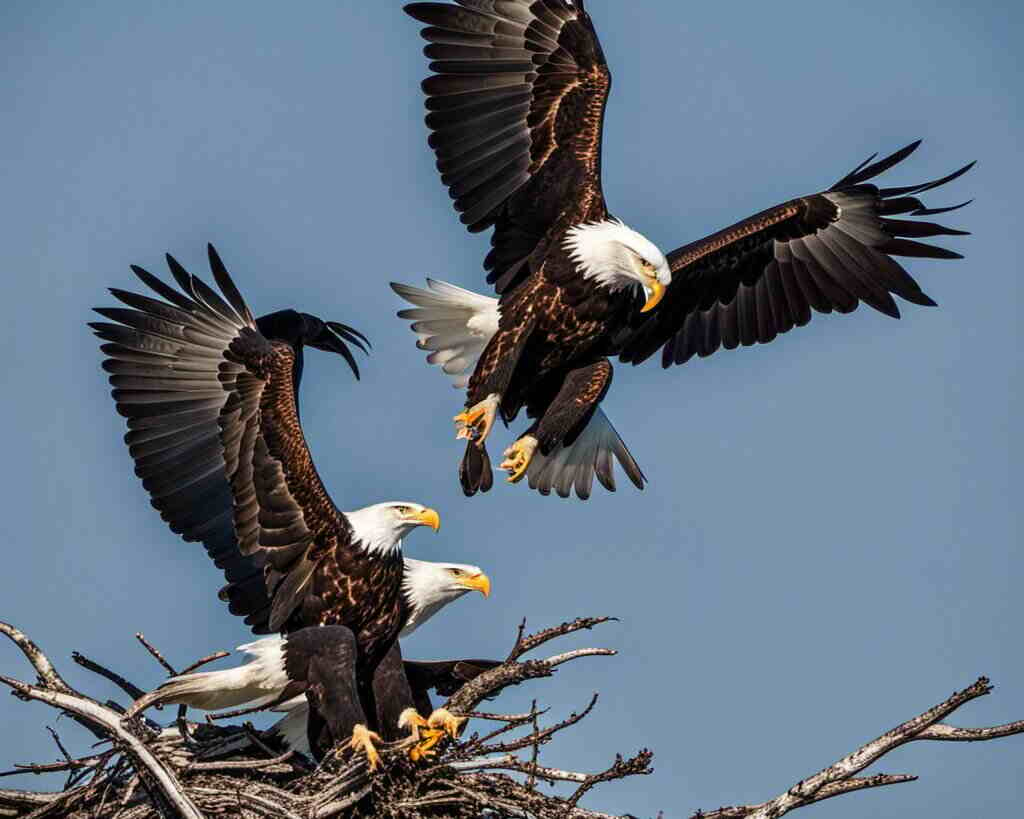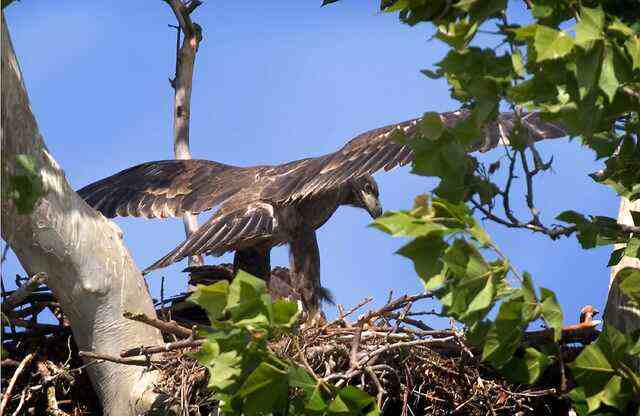When Do Eagles Mate In Virginia? Get ready to witness nature’s version of ‘speed dating’ as we delve into the thrilling world of eagle courtship in the Old Dominion State.
From swoon-worthy aerial displays to the ‘nesting’ drama, we’ll uncover the fascinating timeline of these majestic birds’ love lives.
So, spread your wings and join us for an exhilarating journey into Virginia’s eagle mating season!
Table of Contents
- 1 Key Takeaways
- 2 When Do Eagles Mate In Virginia?
- 3 Overview of Eagle Species in Virginia
- 4 Overview of Eagle Mating Habits
- 5 Eagles in Virginia: A Unique Breeding Ground
- 6 The Role of Seasonal Changes in Eagle Mating
- 7 Mating Rituals and Courtship Displays
- 8 Nesting Behavior and Site Selection
- 9 The Importance of Territory and Pair Bonding
- 10 Egg Laying and Incubation Period
- 11 Chick Development and Parental Care
- 12 Challenges and Threats to Eagle Mating in Virginia
- 13 Conservation Efforts and Protection of Eagle Habitats
- 14 Observing Eagle Mating in Virginia: Best Places and Times
- 15 Conclusion
- 16 Frequently Asked Questions
- 16.1 How long does the mating ritual and courtship display typically last for eagles in Virginia?
- 16.2 Are there any specific threats or challenges to eagle mating in Virginia that are unique to this region?
- 16.3 What are the main factors that determine the selection of a nesting site by eagle pairs in Virginia?
- 16.4 How long does the incubation period typically last for eagle eggs in Virginia?
- 16.5 Are there any restrictions or guidelines for observing eagle mating in Virginia in order to protect the birds and their habitats?
- 17 Author
Key Takeaways
- Eagles in Virginia have unique breeding habits tied to seasonal changes.
- Virginia is a unique breeding ground for eagles.
- Eagles often mate for life and return to the same nesting site each year.
- Late December to early March is the best time to witness eagle mating in Virginia.
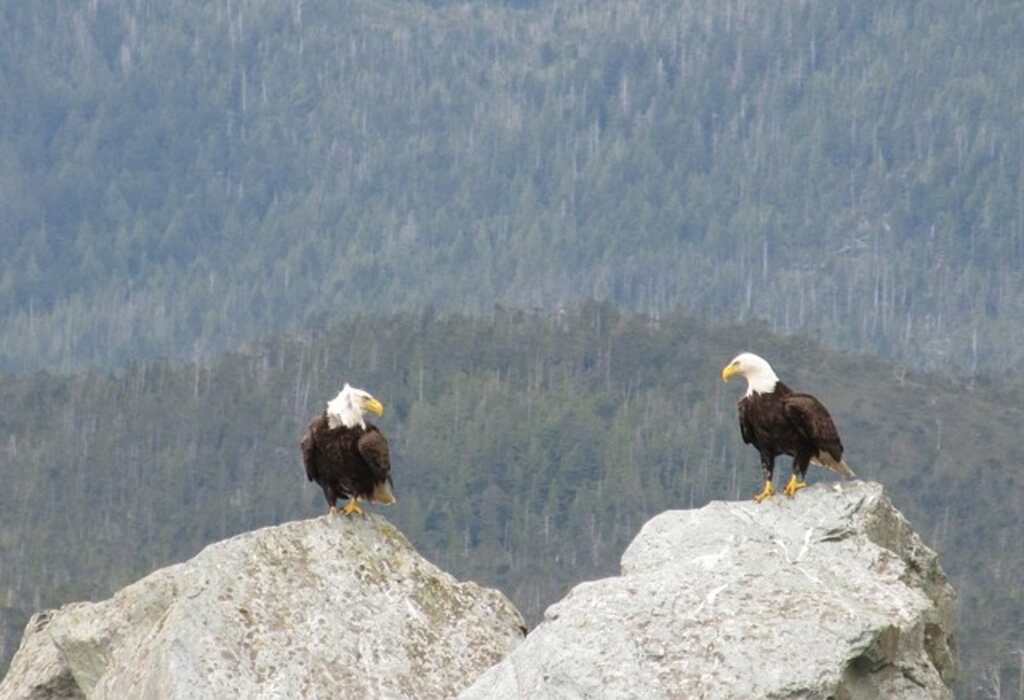
When Do Eagles Mate In Virginia?
Eagles in Virginia typically mate during the winter months, with breeding season starting as early as December and extending into early March.
Overview of Eagle Species in Virginia
Virginia is home to several captivating eagle species, each contributing to the state’s rich biodiversity. The two primary eagle species found here are the Bald Eagle and the Golden Eagle.
The Bald Eagle, an iconic symbol of strength and freedom, has made a remarkable comeback from endangered status, thanks to conservation efforts.
Meanwhile, the elusive Golden Eagle, with its majestic golden-brown plumage, graces the state during its migratory journey.
These awe-inspiring birds of prey not only captivate the imagination but also play vital roles in maintaining the ecological balance of Virginia’s diverse landscapes.
Overview of Eagle Mating Habits
Eagle mating habits in Virginia are characterized by a remarkable display of courtship rituals, showcasing the innate beauty and resilience of these majestic birds.
The eagle breeding season typically begins in late winter or early spring, with mating pairs engaging in intricate behaviors to attract and bond with a potential mate.
Mating behavior analysis reveals that eagles engage in aerial displays, soaring high above their nesting territory, and performing acrobatic maneuvers such as dives, loops, and cartwheels.
These displays demonstrate the strength and agility of the eagles, while also serving as a means of communication between potential partners.
The courtship rituals continue, with the male bringing food offerings to the female, solidifying their bond and establishing trust.
These fascinating mating behaviors make Virginia a unique breeding ground for eagles, attracting researchers and wildlife enthusiasts alike.
Eagles in Virginia: A Unique Breeding Ground
Nesting in Virginia’s forests and wetlands, these majestic birds successfully raise an average of one to two chicks per breeding season. Eagles in Virginia exhibit unique breeding behaviors that contribute to their ecological significance in the region.
First, they engage in elaborate courtship displays, including aerial acrobatics and vocalizations, to attract a mate.
Second, they establish large nests, known as eyries, high up in tall trees or on cliffs, providing a safe and sturdy environment for their offspring.
Finally, eagles in Virginia demonstrate strong pair bonding, often mating for life and returning to the same nesting site year after year.
These behaviors ensure the continuation of the eagle population, making them an essential part of Virginia’s ecosystem.
Understanding the role of seasonal changes in eagle mating further illuminates the intricacies of their reproductive cycle.
The Role of Seasonal Changes in Eagle Mating
Seasonal changes in Virginia’s climate play a crucial role in determining the timing and success of the courtship and reproductive behaviors of eagles.
These majestic birds have adapted to the specific environmental conditions of their breeding grounds, and any disruptions to their natural habitat can have significant effects on their mating patterns.
Climate change, for instance, can alter the timing of seasonal events such as temperature fluctuations and precipitation patterns, which in turn can affect the availability of food sources and nesting sites.
Additionally, the impact of pollution on water quality can also have indirect effects on eagle mating, as it can lead to the decline of fish populations, a vital food source for these birds.
Understanding the influence of these environmental factors is essential for conservation efforts aimed at ensuring the long-term survival of eagles in Virginia.
This knowledge will be further explored in the subsequent section about mating rituals and courtship displays.
Mating Rituals and Courtship Displays
The courtship rituals of Virginia’s bald eagles are a remarkable display of aerial acrobatics and vocalizations, captivating observers with their graceful and synchronized movements.
These mating behaviors are crucial for pair formation and strengthening the bond between mates.
During courtship, eagles engage in a series of ritualized behaviors that serve to establish dominance, demonstrate fitness, and attract a mate.
These behaviors include elaborate flight displays, in which eagles soar high in the sky, locking talons and spiraling downwards in a breathtaking dive.
Vocalizations also play a significant role in courtship, with eagles emitting high-pitched calls and trills to communicate and attract potential mates.
Through these courtship rituals, eagles establish a strong bond that will eventually lead to nesting behavior and site selection.
Nesting Behavior and Site Selection
One key aspect of bald eagle behavior is the careful selection of nesting sites, which can greatly impact reproductive success.
For example, research conducted in the Pacific Northwest found that bald eagles showed a preference for nesting in tall, old-growth trees near bodies of water, providing them with a strategic vantage point for hunting and protecting their young.
Nest construction is a crucial part of the mating behavior of eagles. The female eagle takes the lead in constructing the nest, using sticks, grass, and other materials to create a sturdy structure.
The male assists in this process by bringing additional materials to the nest. The nest is often built in a location that provides shelter from the elements and is inaccessible to predators.
This careful selection of nesting sites and the construction of a secure nest are crucial steps in ensuring the successful reproduction of bald eagles.
Moving forward, it is important to understand the significance of territory and pair bonding in eagle mating behavior.
The Importance of Territory and Pair Bonding
Territory and pair bonding play a crucial role in the mating behavior of bald eagles. Bald eagles are known for their strong territorial behavior, defending their nesting sites vigorously against intruders.
The defense of their territory ensures a suitable and safe environment for successful mating and raising offspring.
The significance of pair bonding is equally important, as eagles form long-term partnerships that last for many breeding seasons.
These pair bonds are formed through elaborate courtship displays, including aerial acrobatics and vocalizations.
Pair bonding provides stability and cooperation between the male and female eagles during the breeding season, ensuring successful reproduction.
This strong bond enables them to work together in nest building, incubating the eggs, and raising the young.
Transitioning into the subsequent section about ‘egg laying and incubation period,’ the pair’s commitment to their territory and each other ensures the continuation of their breeding cycle.
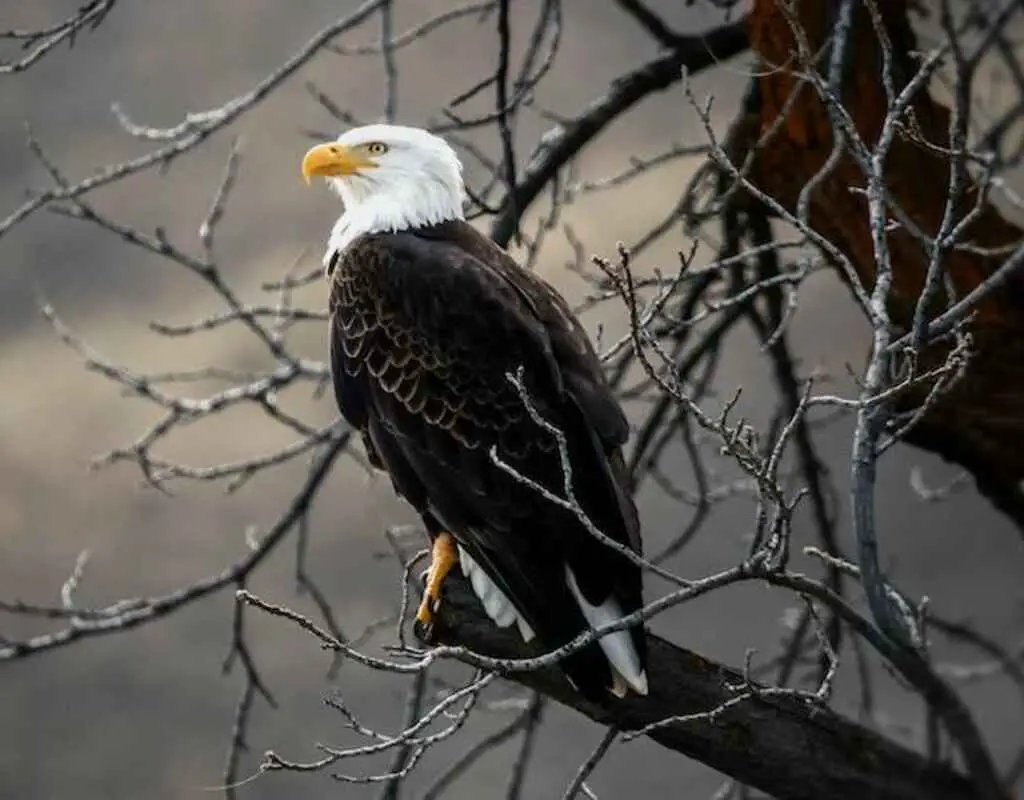
Egg Laying and Incubation Period
During the egg laying and incubation period, bald eagle pairs diligently attend to their nest, ensuring proper care and development of their offspring.
This period typically occurs in late winter or early spring, with eagles in Virginia typically laying their eggs between January and March.
The female eagle is responsible for the majority of incubation duties, which involve keeping the eggs warm and protected from the elements.
The incubation period lasts around 34-36 days, during which the parents take turns incubating the eggs.
Once the eggs hatch, both parents share the responsibilities of feeding and protecting the chicks.
The parents tirelessly provide food for the growing chicks, often bringing fish or small mammals to the nest.
This parental care is crucial for the survival and development of the young eagles.
Transitioning to the subsequent section, chick development and parental care play a vital role in the growth and success of the bald eagle population.
Chick Development and Parental Care
Chick development and parental care are critical factors that contribute to the overall growth and success of the bald eagle population, as they ensure the survival and proper upbringing of the young eagles.
After an incubation period of about 35 days, the chicks hatch from their eggs. At this stage, they are covered in soft down feathers and are completely dependent on their parents for food and protection.
The parents play a crucial role in the growth and development of the chicks by providing them with a steady supply of food, mainly fish, through their hunting and feeding behavior.
The parents tear the food into small pieces and feed it directly to the chicks.
As the chicks grow, their feeding behavior changes, and they eventually learn to feed themselves.
This period of chick growth and parental care is vital for the young eagles to acquire the necessary skills and strength required for their survival in the wild.
Moving on to the next section, the challenges and threats to eagle mating in Virginia can impact this critical phase of chick development.
Challenges and Threats to Eagle Mating in Virginia
Vulnerable to various environmental factors, the successful mating of bald eagles in Virginia faces a multitude of challenges and threats.
During the mating season, eagles encounter several challenges that can hinder their reproductive success.
These challenges include competition for mates, limited availability of suitable nesting sites, and inclement weather conditions that can affect the timing and duration of mating behaviors.
Additionally, eagles may face threats from human activities such as habitat destruction, pollution, and disturbance near nesting sites.
These factors can disrupt the eagles’ mating behaviors and reduce their overall reproductive success.
To ensure the continuation of eagle populations in Virginia, conservation efforts and the protection of eagle habitats are crucial.
By addressing the challenges and threats faced by eagles during mating, we can support their successful reproduction and contribute to the long-term conservation of this majestic species.
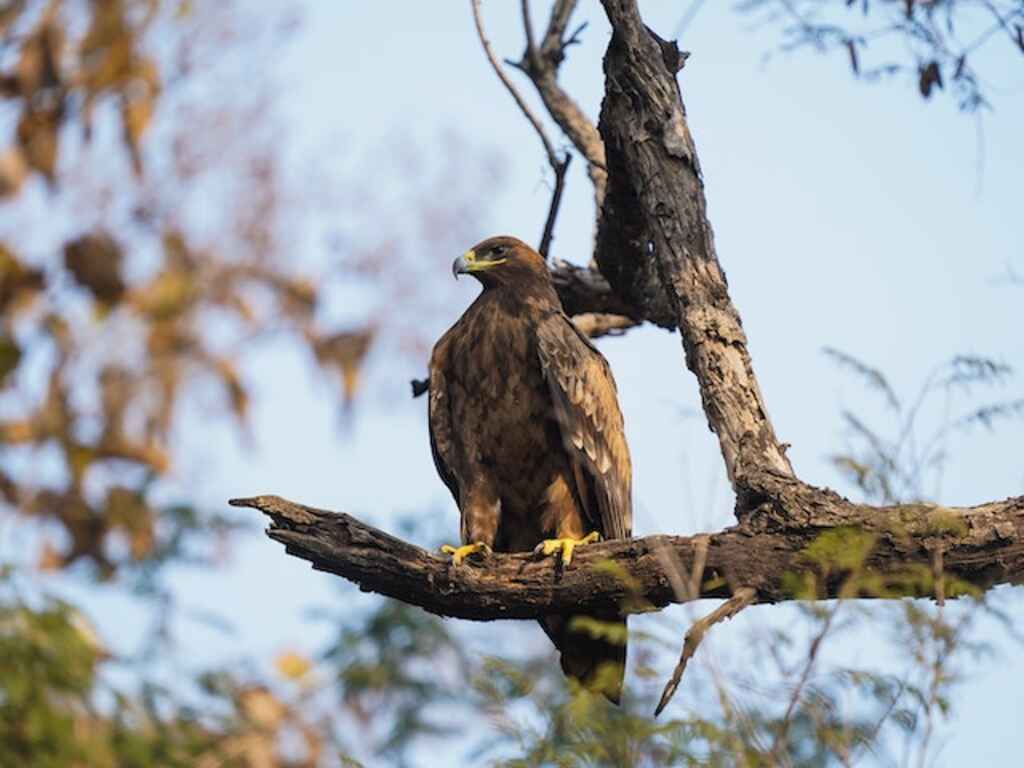
Conservation Efforts and Protection of Eagle Habitats
Conservation efforts and the protection of eagle habitats play a crucial role in ensuring the long-term survival of this majestic species in Virginia.
To safeguard eagle populations, various organizations and government agencies have implemented measures such as establishing protected areas, monitoring nesting sites, and promoting habitat restoration.
One key conservation effort is the enforcement of regulations to minimize disturbance near nesting sites during the breeding season.
This includes restricting human activities, such as boating and fishing, in close proximity to eagle habitats.
Additionally, efforts are made to preserve and enhance the availability of suitable nesting trees and ensure the availability of prey species, such as fish and waterfowl.
By focusing on these conservation efforts, the goal is to maintain healthy eagle populations, allowing for successful mating and reproduction.
Transitioning into the subsequent section about observing eagle mating in Virginia, it is important to identify the best places and times to witness this remarkable natural phenomenon.
Observing Eagle Mating in Virginia: Best Places and Times
Virginia’s abundant rivers and coastal areas provide excellent opportunities for witnessing the awe-inspiring courtship displays of these majestic birds. If you are interested in observing eagle mating in Virginia, there are several best viewing spots to consider.
First, the James River is a popular location, especially near the Dutch Gap Conservation Area and Presquile National Wildlife Refuge.
Second, the Chesapeake Bay area, including the Eastern Shore and Tangier Island, offers excellent opportunities to witness eagle courtship.
Third, the Rappahannock River near Tappahannock and the Potomac River near Colonial Beach are also known for eagle sightings during the mating season.
Lastly, Shenandoah National Park provides a breathtaking backdrop for observing eagles as they engage in their intricate courtship rituals.
The best time to witness eagle mating in Virginia is typically from late December to early March, coinciding with their breeding season.
Conclusion
In conclusion, eagles in Virginia follow a distinct breeding pattern, with their mating season occurring during the winter months. From January to March, these majestic birds engage in courtship and nesting activities.
Observing eagles during this period can offer a unique opportunity to witness their fascinating behavior and natural instincts.
However, it’s essential to respect their nesting areas and maintain a safe distance to avoid any disturbance to these beautiful creatures during their critical breeding period.
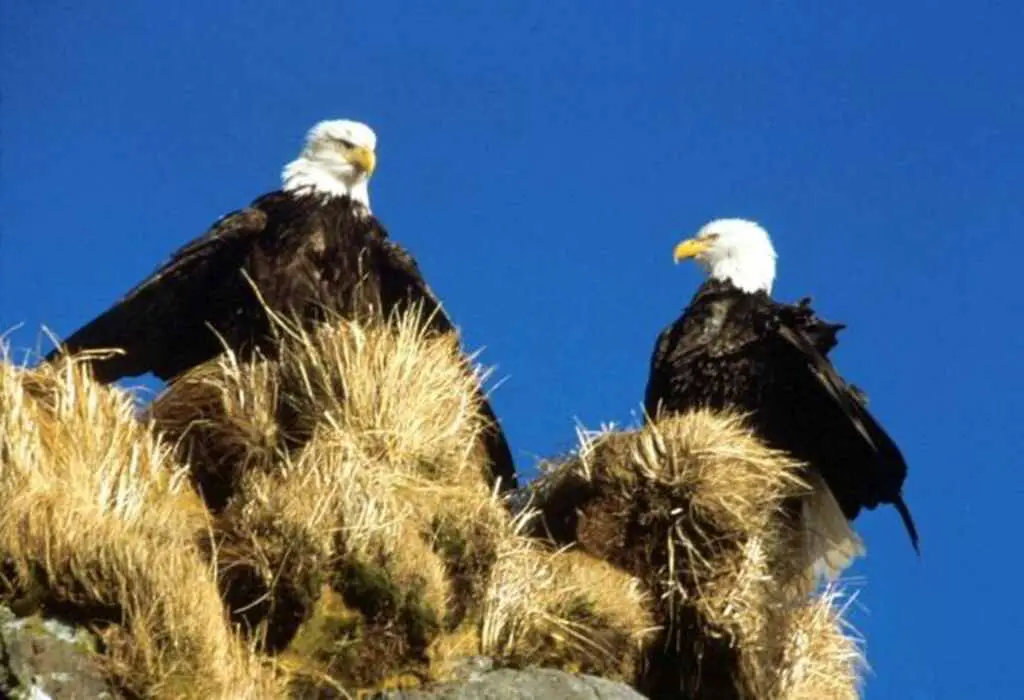
Frequently Asked Questions
How long does the mating ritual and courtship display typically last for eagles in Virginia?
The courtship display and mating ritual duration of eagles in Virginia typically lasts for a specific period of time. This period can vary depending on various factors such as species, environmental conditions, and individual behaviors.
Are there any specific threats or challenges to eagle mating in Virginia that are unique to this region?
Specific threats and challenges to eagle mating in Virginia, unique to this region, include habitat loss, disturbance from human activities, pollution, and collisions with power lines. These factors can disrupt courtship displays and reduce breeding success.
What are the main factors that determine the selection of a nesting site by eagle pairs in Virginia?
The selection of a nesting site by eagle pairs in Virginia is determined by various factors. These factors include habitat availability, proximity to water bodies, availability of prey, and suitable nesting materials. Understanding these factors is essential for the conservation and management of eagle populations in the region.
How long does the incubation period typically last for eagle eggs in Virginia?
The incubation period for eagle eggs in Virginia typically lasts around 35-40 days. This duration is crucial for the hatching success of the eggs, as it allows for proper development and ensures the survival of the offspring.
Are there any restrictions or guidelines for observing eagle mating in Virginia in order to protect the birds and their habitats?
Observing eagle mating in Virginia requires adherence to specific guidelines and restrictions to protect the birds and their habitats. Conservation efforts aim to ensure minimal disturbance during breeding season, with limited access areas and distance requirements from nests.

